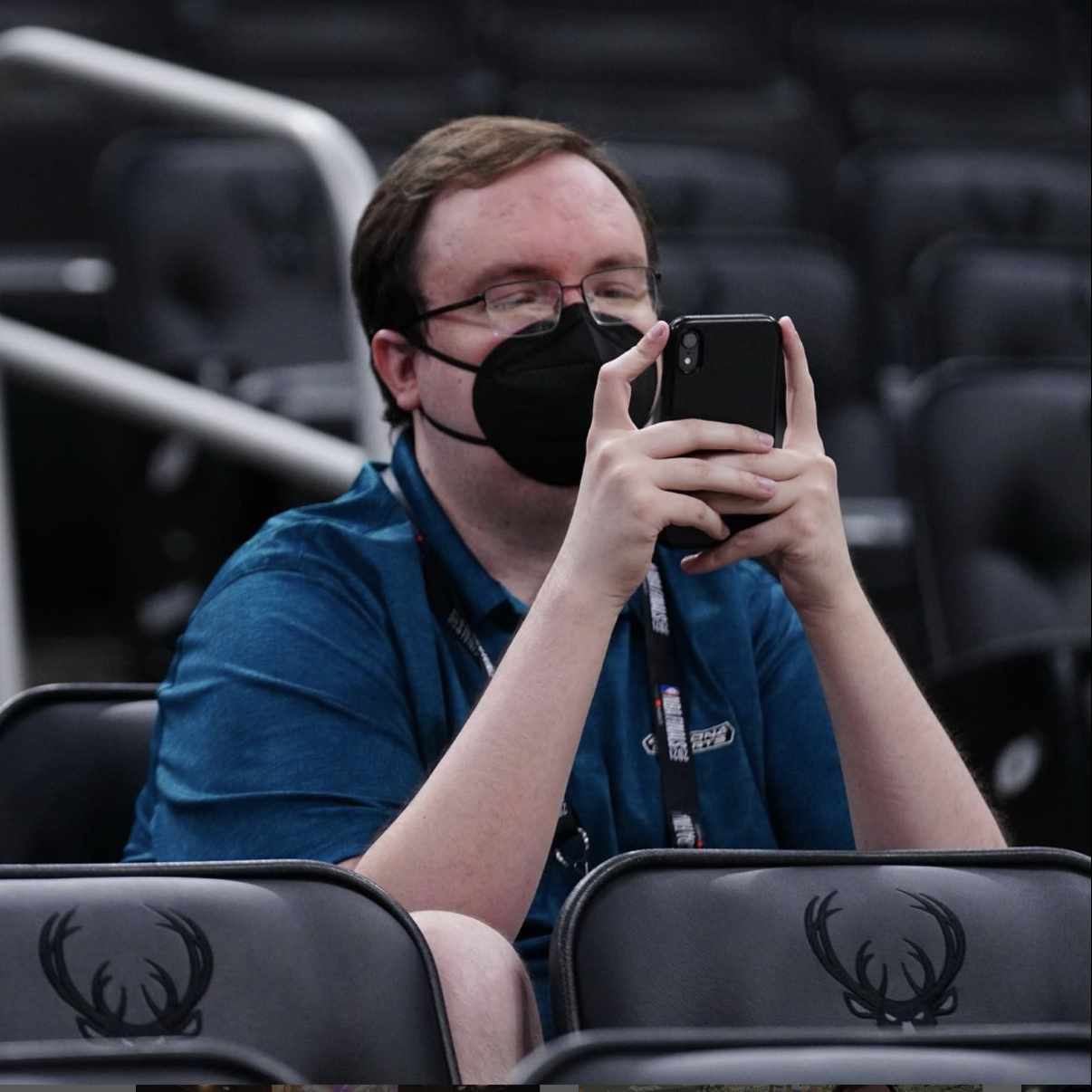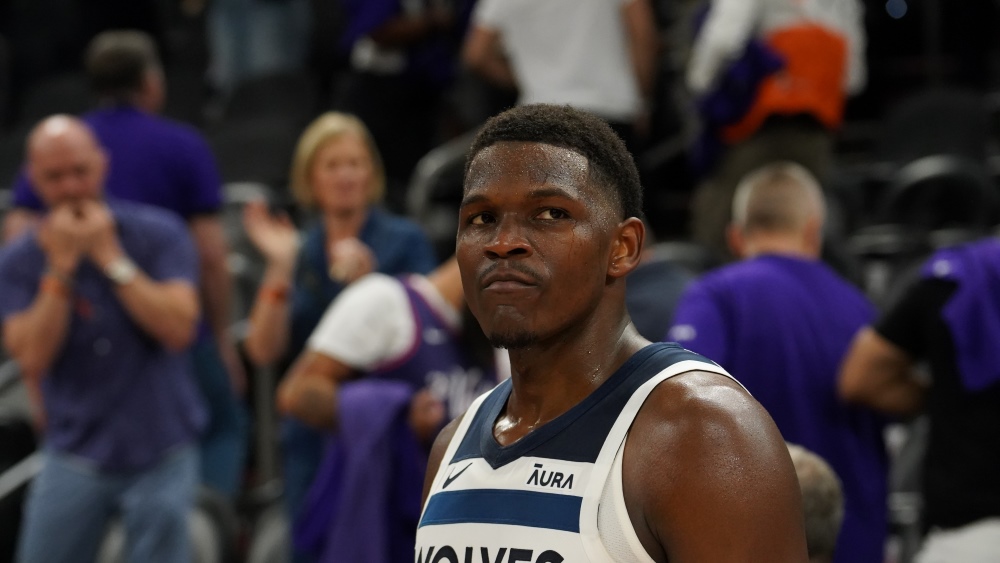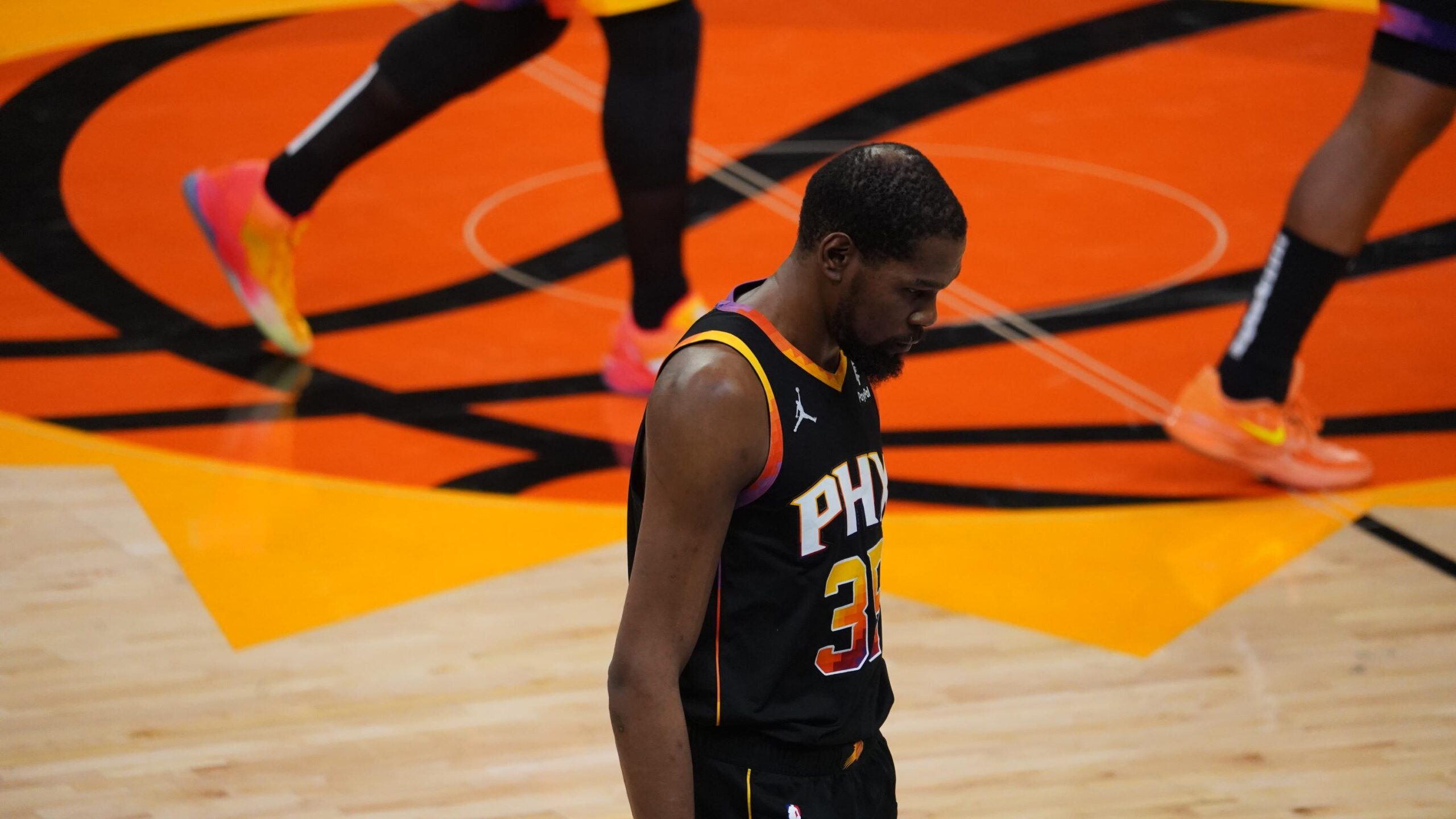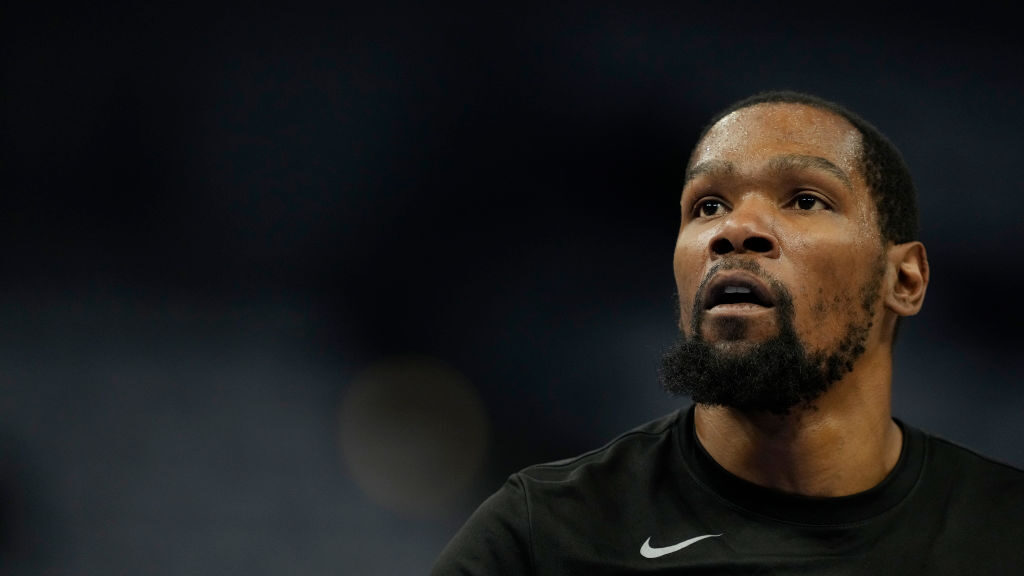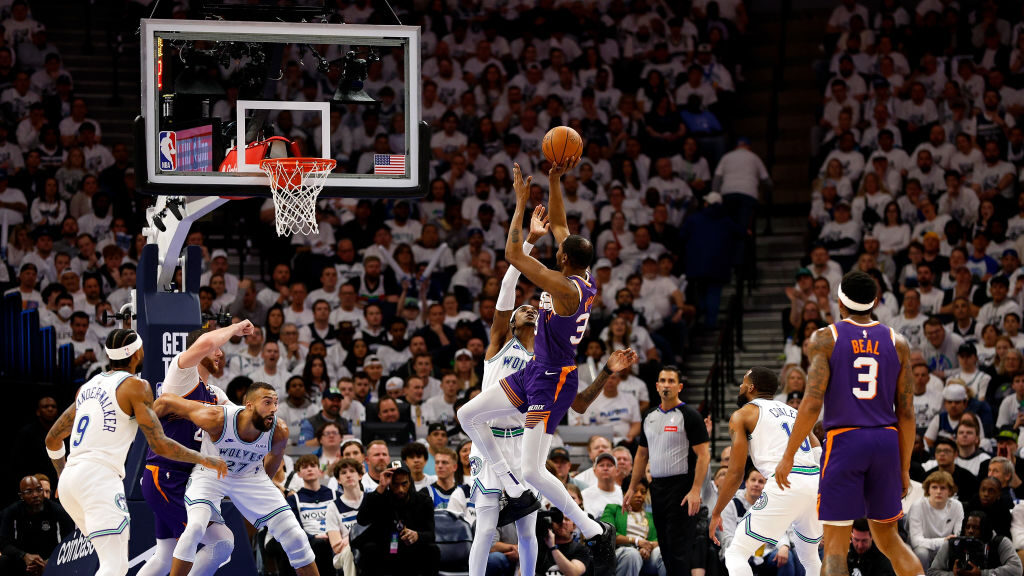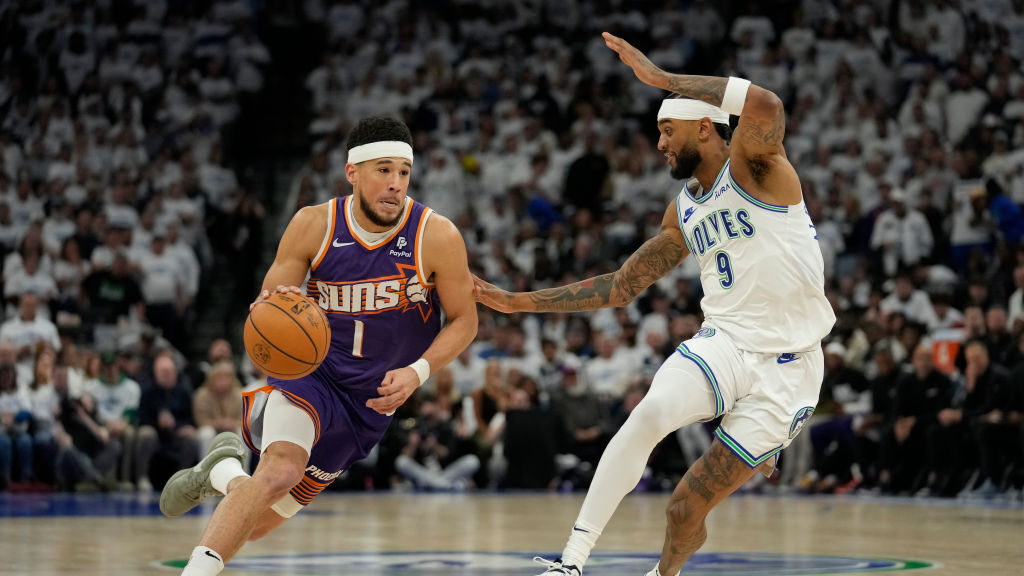Deandre Ayton improving greatly as Suns’ patience with growth continues
Jan 21, 2020, 5:38 PM | Updated: 6:15 pm
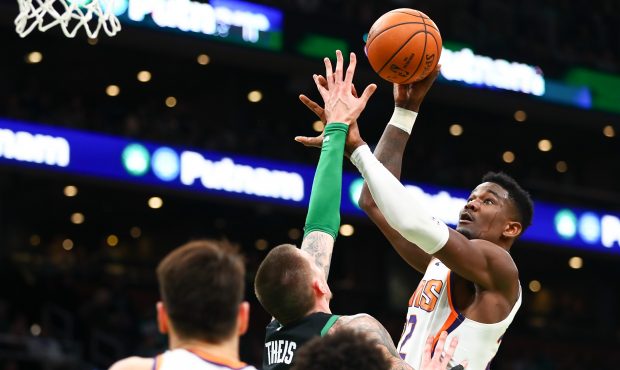
Deandre Ayton #22 of the Phoenix Suns shoots the ball during a game against the Boston Celtics at TD Garden on January 18, 2020 in Boston, Massachusetts. (Photo by Adam Glanzman/Getty Images)
(Photo by Adam Glanzman/Getty Images)
PHOENIX — Patience.
When Monty Williams was asked Monday what stood out from his time in Portland as an assistant watching a younger now seven-time All-Star LaMarcus Aldridge, he said it was that same thing he took with him to New Orleans when he was head coach and in charge of developing Anthony Davis, soon to be a seven-time All-Star.
Aldridge came in with the same rookie class as Brandon Roy. In the 2006-07 season, Roy immediately seized the Trail Blazers as his own, averaging 16.8 points per game and becoming the present and future of the franchise in just a few months. That was even after going four spots later in that 2006 NBA Draft than Aldridge, who only started 22 games and played 22.1 minutes a night as a rookie.
By year two, Aldridge would find his way, averaging 17.8 points and 7.6 rebounds, but would still have to wait until his sixth season to make an All-Star game. That same year two for Roy was his first All-Star nod.
“Brandon just took the whole thing by storm and you just naturally kind of forgot about this kid over here who is 6’11 who could do everything,” Williams said.
Sound familiar?
“For me, just watching his game and watching him work — you could tell this is the deal right here,” Williams said of Aldridge. “He had everything but he just had to be patient.”
Sound familiar?
“So, he just had to wait, but he kept working,” Williams said of Aldridge. “So you just knew, at least you thought you did with the bigs, it was going to take a minute for him to totally get it. But if you could just be patient with him, he was going to be really, really good.”
Sound familiar?
Alright, I know we’re stretching a bit there for funsies.
Devin Booker wasn’t in the same draft as Deandre Ayton, and Ayton is anything but forgotten off to the side in his second season after being the No. 1 overall pick. Ayton also isn’t having a dramatic statistical uptick and serious emergence in year two like Aldridge.
But when you watch Ayton play recently after finding his flow returning from a 25-game suspension, there has clearly been a major breakthrough when it comes to impacting games and helping his team win.
That takes us back to patience, where Ayton has been gently pushed by the Suns the past 18 months to change his playstyle, embracing his physical gifts more and playing harder through energy instead of finesse.
And believe me, that encouragement has been happening.
Something to understand about Ayton is that he constantly has someone in his ear.
If you’re coming out to a game anytime soon, show up roughly an hour before tip-off to watch him go through pregame warmups. He will be consistently communicating with assistant coach Mark Bryant.
You’ll always see them doing this. Taking turns from post position pointing at things. Judging from afar Bryant really wants him to be quick and decisive once he gets the ball. pic.twitter.com/Tf0aEjCOhT
— Kellan Olson (@KellanOlson) January 21, 2020
From there, maybe it’s another assistant or teammate pulling him aside for another 15-30 seconds of quick reassurance.
Now that they’ve seen him capable of change in the past couple weeks, it’s overwhelming in some instances. We’ve recently seen Booker react like this.
Booker is fired up after Ayton’s effort. pic.twitter.com/mwvmbFuL6P
— Mike Vigil (@protectedpick) January 19, 2020
Everyone watching, including the organization and its players more than anyone else, gets what’s going on.
It seems as if Phoenix’s staff has finally been able to break down that wall.
In a more basic outline, Ayton needed to be less of the 20-10 version of himself that produced empty stats and worry more of playing like an energetic big, prioritizing the glass, finishing at the rim, screen-setting and defense. In his rookie season, seeing the latter version was more promising than the former. And as we’ve seen for the last four games in which Ayton is averaged 24.3 points and 14.5 rebounds per game, you get both through the latter.
Consistency is the key word, the one you will almost always hear Williams start and end with when questioned about his franchise center.
Kelly Oubre Jr. was asked before Monday’s game about how the Suns try and motivate Ayton to get there.
“Positive affirmations,” he said. “That’s just one thing I try to do. Just try to stay in his ear, let him know he’s capable of great things but it’s up to him to do that. But he listens, though. It’s good.”
To paint the picture here you can’t get from reading, Oubre said that like someone who has thought long and hard about his relationship with Ayton. It’s part of how they operate as people around him to crack the code on getting the best version of Ayton as a player.
“He can always do this stuff,” Oubre said. “It’s just a mental thing for him. Honestly, I think something clicked within his mind that he has to be a dominant beast in that paint in order for us to be great.”
As previously mentioned, Ayton has fluttered in and out of that mental state since his first game, and it’s clear when you are getting the right one, like this decisive finish over three defenders.
The most telling place on the floor is when Ayton is rolling to the rim. Williams recently talks about how effective Ayton’s dives can be for the offense, and even when unprompted on Ayton, he says that he reiterates with the team how important dives can be for their offense. It’s no secret who he is talking about the most there.
Remember the video with Bryant and discussions of how to react quickly when the ball comes? How about this move with some space on a dive, embracing contact?
And those movements are primarily how Ayton is going to get the ball in the paint.
So when he rolls like this next action, sealing off Marcus Smart with some ridiculous shuffling of his feet in order to get the rock, it’s a one-dribble bump to get a bit more space and then cash.
That’s not happening without the effort it takes to roll like that and the energy it requires to bump like that to make it an easier shot.
Through that, Ayton is leading the league in paint touches at 12.6 per game, up from 11.1 last year. Even with his efficiency down to 54.2% shooting on the season, he’s at 60.7% on those paint touches and 66% at the rim still.
But most importantly, Ayton has always had the infinite respect of defenses as a presence. Even if they know he’s not the most physical of players, they are committing to his rolls and fouling the crap out of him (if they can) once he’s close enough to the rim. It’s natural to react that way with a man that large moving that fast.
Watch Boston’s defenders converge on Ayton here.
Watch San Antonio’s defenders concede defeat here.
— kellanolsonclips (@kellanolsonclip) January 21, 2020
“I’m starting to see how easy it is to get easy seals and easy fouls,” he said after Monday’s game.
With that level of activity that has him taking 23 free throws in his last three games, Ayton can also be even better than he was on the offensive glass last year, which is saying something and is where he can get a good chunk of his shots from the foul line.
There are less than 10 players in the league that can make this play and he’s one of them.
So you see, Ayton can dominate offensively without a catalog of post moves, a three-point jumper and so on. The numbers are there without it.
This all sounds quite encouraging, huh?
Well, the best part is that Ayton’s biggest growth has come on defense, where he’s become borderline good and could potentially be great as the backline defender in a pick-and-roll.
Again, the extra effort goes a long way here.
That play and this next one are mostly to showcase how athletic he can be, but don’t miss out on seeing how Ayton still keeps himself balanced and ready to contest the shot. Actually, let’s pull an audible and go back to our top clip again to just watch Ayton’s feet. Notice those last two quick shuffles? That’s so he doesn’t get too out of control and stays within himself so he can leap quickly to deter the attempt.
See what I’m saying? That’s really, really advanced stuff.
In New York, this is less of an incredibly agile mad scramble and more of Elfird Payton foolishly entering Ayton’s vortex where Ayton doesn’t overcommit and protects the layup on either side of the basket.
Ayton is evolving his terrific on-ball prowess for defending and blocking shots into something as a supporting defender, his next step for when he’s not directly involved in the action because his man set a ball screen.
I cannot declare enough how much of a big step it is for Ayton to not only recognize this below is his help but also technically to take two different steps to establish himself as a vertical defender in order to properly contest this ball without wildly fouling.
“I think he’s gotten much better at recognizing the situation,” Williams said before Monday’s game of that defensive spot. “He’s got the athleticism and quickness to cover up a mistake and that’s something that every big in the league can’t say.”
What Ayton has done the past week is re-align his trajectory as a cornerstone for the Suns, but not in a negative way.
While his critics will say he’s proven he can’t be the player he should be, his work rate to improve in the fashion he has says otherwise. And as for in the game during that key stretch of the fourth quarter against the Spurs, he was at the center of it with the offense run through him in high pick-and-roll, all while completely exhausted.
“I wanted to throw up after the game,” Ayton said. “You can hear your heart beating in your ear after a game like that, just running all around.”
Ayton being a workhorse through his high motor rather than his supremely high level of skill for a human that large is how he can best help Phoenix win games right now. It’s also his best chance of becoming a superstar, where getting better at the more difficult parts of the game through top-level energy is greatly benefitting him as he irons out everything else a young big man has to.
“I’m looking for the intensity for eight-to-nine minutes straight, and I think if he can build his conditioning and level of play to that minute of output, I think he’s going to find himself in situations when he can somewhat come close to that production,” Williams said of the high numbers for Ayton as of late.
That is where, again, we arrive at the same finish line on our race of an Ayton thought exercise to patience, which the man in charge plans on keeping.
“You see these giants that can run and shoot and all of that and you expect it every night but it’s hard to do that every night in this league against veteran guys who know what you’re bringing to the table,” Williams said.
“I want to be patient with him and not get too far ahead of myself.”
All statistics via NBA.com and Cleaning the Glass

